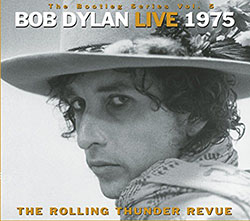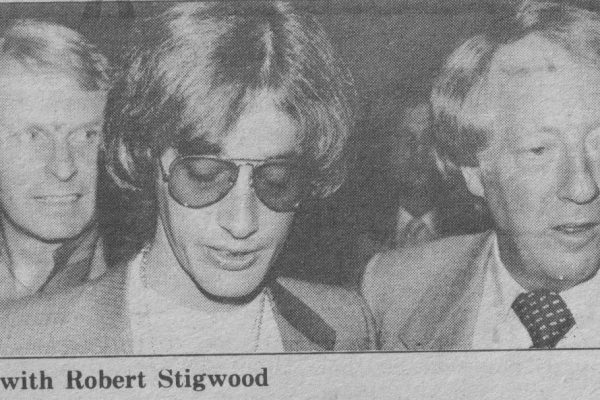Original Publication – The Village Voice, May 11, 1972
San Diego – The third largest city in California, San Diego has always been San Francisco’s and Los Angeles’ conservative bumpkin cousin. She’s got great blue beaches and nice curving hills but not much pizazz and not much crime – definitely a non-candidate for the Big Time. At least that’s what everyone thought until a fellow wallflower turned Big Daddy and moved into a naturally air-conditioned castle in nearby San Clemente. Richard the Rex remained “officially neutral.” Unofficially, he told his staff, “San Diego’s the One! Forward Together.”
The GOP followed orders and began making plans to hold its National Convention here. At first San Diego tried to resist the advances, but in the end the promise of being Where It’s At for a week was overwhelming. In a burst of youthful exuberance San Diego said yes and tried to do the right thing. She would reverse Dirty Daley and play hostess to everybody: fat cats and long hairs, Eastern media sophistos and Western political hacks. Everybody gets equal treatment. Her debut would be stunning. San Diego would become the little city that could. The lady didn’t quite pull it off, but please don’t give the official Republican reasons why. Don’t say the city wasn’t ready.
Never having hosted a convention before, San Diego didn’t know what to expect, so planned for every possible contingency. Unlike big Eastern cities of comparable size (population 747,000), San Diego is relatively young and not held back by either tradition or experience. As a result, there is no precedent for the sort of planning the convention required and into the vacuum poured every manner of imaginative scheme. To many worried San Diegans political conventions meant Chicago ’68, and nobody wanted a repeat of that performance. They would be ready just in case, though. The city turned itself into a vast planning center.
The police applied for nearly $1 million worth of equipment and training to be paid by the Law Enforcement Assistance Administration of the Justice Department. After the LEAA told them they weren’t interested in funding San Diego’s police force for the next 20 years, the request was scaled down to $537,750. Curiously the money never arrived. The Justice Department kept saying it was being “processed.” Undaunted, the police went ahead and ordereded 40 suits of Kendo, Japanese fencing armor, to wear as they practiced pelting each other with rocks and tomatoes in anticipation of confronting the legions of dissidents who threatened to descend on the convention by the hundreds of thousands. Every officer in the country would receive 24 hours of training, including several hours of sensitivity training. The sensitivity sessions temporarily broke down however, when local protesters were brought in. The cops refused to role-play with them.
Police junketed to Chicago to learn what to avoid, and to Washington to get tips on how to control mass demonstrations. Five city employees drew up a master list of where to find every possible resource the police might need – from toilets to plumbers. A special police office was set up right in the GOP planning committee office in the plush motel that served as official Republican headquarters. Locations of mass detention centers were considered. Local leadership was stressed. “Of course,” said Inspector William Kolender, one of the honchos in police planning, as he handed me a rubber pig with “kosher” written on it, “we are in contact with the Justice Department, the FBI, the Secret Service, the Signal Corps, the National Guard, and the military, but we’re running this show.” For the police as well as the dissidents, non-violence was the official password. The police, however, would be ready for the Second Coming of a Communist Chinese invasion from Tijuana.
Not to be outdone by their adversaries, the demonstrators were also busy busy busy. Every summer at least 50,000 young people come to San Diego to enjoy the beaches. This summer thousands more protesting the war and administration policies would also come – farmworkers, Gay Liberation, Welfare Rights Organizations, and thousands of Jesus freaks.
The San Diego Convention Coalition was the local activist umbrella group directed mass demonstrations against the war.
They, too, were pledged to non-violence. The Coalition divided itself into 17 separate committees to plan numerous activities, especially a huge demonstation on the opening day of the convention at the Sports Arena.
Specialized decentralization characterized the Coalition’s modus operandi. Bill Ritter, Media Committee spokesman, explained, “If our organization isn’t working to the hilt, we dissolve and reconstitute. We’ve completely re-organized four times since last November.” Ritter also stressed locals were in command. “We have some very heavy people here from Berkeley and Cambridge who’ve done a lot of heavy organizing, but we’re making the decisions.”
The Coalition met in ramshackle headquarters in a run-down part of town. Round the clock committees planned what to plan. Their creative piece de reisistance was Expose 72, a large Human People’s Park featuring geodesic domes, American weapons captured by the NLF, free food and child care, and model workshops on alternatives – how to start a food conspiracy, how to set up a women’s health collective, etc. “We’re hoping for Woodstock, not Chicago,” said a planner.
The hard-core radicals desparied at so many groovy happenings – people would ignore the Republicans. The biggest split among the dissidents was between those who wanted to concentrate on developing model’s of alternative life styles, where the importance of politics would dissolve in a haze of Crunchy Granola and do-it-yourself pelvics, and those who wanted to bring the system down. The differences roughly correspond to the two main groups of dissidents, the Coalition and the San Diego Community Congress (a loose coalition of 52 alternate institutions such as free clinics, street agencies, legal and medical activities, and the “far-out” branches of local churches), which for some time has acted as a youth advocate in San Diego.
Congress and Coalition worked together on most issues, but disagreed on the question of an open or closed campsite. The Congress felt it should be open to anyone, but the Coalition wanted to control it themselves. “We don’t want to be hassled by Jesus freaks,” said Ritter, “and we don’t want to be killed by Nazis.” His fears about Nazis were justified. In San Diego you can Dial a Nazi and get a recorded hate message from the National Socialist White People’s Party. Another extremist group, the Secret Army Organization, has recently published its list of traitors – including the Republican mayor of San Diego.
Commenting on the Coalition’s fight with the Congress, an aide to the mayor said, “I wish those two groups would get their shit together.” Inspector Kolender agreed. “I wish they’d get their crap together . . .” When asked about the lack of minority participation in the demostrations, Kolender, who considers himself a real man of the people, responded: “It’s a shame how the Coalition and the Congress aren’t doing more to involve the minorities of this city in their plans. You can’t expect the minorities to come to you, you have to recruit them, bring them into the mainstream.” Can you imagine a Chicago cop talking like that?
But then. On April 13, a letter from Sentator Robert Knowles of Wisconsin, Covention Coordinator, to Richard Herman, vice-chairman of the convention Arrangement Committee, was leaked to the press, suggesting the Republicans look for a new place to hold the convention. San Diego wasn’t coming up with enough money or sufficient hotel rooms, and modifications at the Sports Arena were not proceeding on schedule. But on the same day, Herman, a close friend of acting Attorney General Richard Kliendienst and chief negotiator for convention plans, assured Mayor Pete Wilson the convention was of course coming to San Diego. The city hoped so — $175,000 of city money had already been spent on the convention. The city had even hired a clipping service to monitor what the media said about San Diego.
After Herman’s conversation with Wilson on April 13, there was no futher communication from the Republican hierarchy to the City of San Diego.
On April 2, the mayor’s office learned from the press that negotiations were going on between Herman and Miami about moving the convention there. The reasons given were the same as those of the Knowles letter. The news hit town like a bombshell. Few insiders believe the Republicans’ reasons for disenchantment with San Diego.
What the city government underestimated was the damaging effect on the ITT scandal on the GOP. ITT seemed far away to San Diego because it wasn’t a local corporation and most of the arrangements for the ITT money were made in Washington. Since the C. Arnholt Smith story – his financial dealings were the subject of a recent Life expose – was old-hat locally, they under-estimated that, too. A county official suggested the protesters’ plans for Expose 72, etc., would be a lot more attractive for CBS to film that “the coronation going inside the convention hall.” Security around the Sports Arena was always a problem. There were only three accesses, and if they became clogged with demonstrators there could be violence. A guess was the President didn’t want to risk alienating the citizens in his stronghold, his “lucky city.” George Wallace’s landslide victory in the Florida primary also counted. Nixon’s presence in the South would enchance his Southern strategy.
On Friday, April 21, in a hastily called press conference, a stunned Mayor Wilson said he hadn’t been told of any change of plans and would not cancel anything until he heard to the contrary. But by Tuesday of the following week, the mayor canceled all convention plans and the city attorney was considering suing the Republicans for money the city had spent attemtping to put San Diego on the map.
But while the mayor and his staff, whose prestige had been badly bruised, were not in a conciliatory mood (“We better get a written apology and a letter from the Republican National Committee saying we could have handled it,” said Larry Thomas, the mayor’s youthful press secretary. “Everybody broke their butts here”), not everybody felt bad. James Gleason, the county official negotiating health plans with the Community Congress, thought his endless meetings paid off. “I went back to Washington, and I saw there was no precedent for the kind of community cooperation we had between the establishment and the acknowledged dissenters. The youth have very definite ideas. They say our programs aren’t meeting community needs. We’re listening now. We weren’t that sensitive before. The convention brought us together.”
“I’m kind of sorry we aren’t having the conventions,” Gleason continued. “San Diego could have proved something. We can have dissidents, and we can live peacefully. This was the challenge – to turn the corner on violence.” He signed. “San Diego would have been an example to the rest of the country.”
This article is typed from the original material. Please excuse any errors that have escaped final proofreading.



